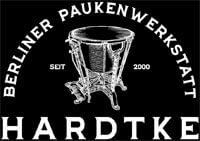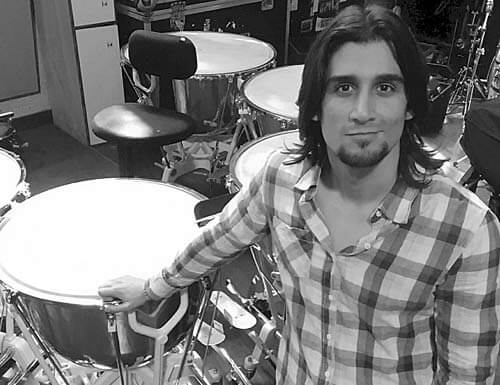Hilvic Gonzalez
Timpanist and percussionist at the Simon Bolivar Symphony Orchestra of Venezuela.
My thoughts about being a timpanist
For me, the timpani is the soul of the symphonic orchestra, is its tower of control, and it is incredible how much this beautiful instrument can change the sound and the character of any piece of music.
A timpanist can play with the colors and textures of music giving it his own personal mark, connecting with the other sections of the orchestra, and likewise must know with precision when the timpani has to be played as a bass, reinforcing the deepness of the sound of the low section of the orchestra; when has to be played emulating trumpets, emphasizing the rhythm and when has to be played properly as a timpani, being the support of the orchestra and providing a unique color to the music.
Most of the time, the timpani has not challenging parts in terms of notes as other instruments in the orchestra and that’s why I think that the main purposes of a timpanist are the maturity and the personality of the sound and the accuracy of the tuning. Apart from that, the timpanist must always be in shape, in terms of agility and precision, build a strong connection with the drums, and be one with them at the moment of playing.
Career
Hilvic Gonzalez started his studies of music at the age of 13 at the Simon Bolivar Conservatory of Music in Caracas, Venezuela under the teaching of Yvan Hernandez. In his first years, he also was part of his musical formation with the professors Jerry Cardenas, Jaider Arteaga, and Ricardo Alvarado.
A few years later he started to take private lessons with Ramon Granda, timpanist of the Simon Bolivar Symphony Orchestra of Venezuela at that moment.
At the age of 18, he became the principal timpanist/percussionist of the Teresa Carreño Youth Orchestra of Venezuela with whom participated in many international tours playing as a timpanist in most of the important music theaters around the World, including Berliner Phillharmoniker, Concertgebouw of Amsterdam, Vienna Konzerthaus, NCPA of Beijing, Teatro Alla Sacala of Milan, Shanghai Symphony Hall, Gasteig Kulturzentrum of Munich, Royal Festival Hall of London, Halle Aux Grains of Toulouse, Grosses Festspielhaus of Salzburg, among others.
In 2013 he played his first soloist concerto, the Concert for 8 timpani obligato and orchestra of J.C Fisher under the baton of Maestro Christian Vasquez, chief conductor of Stavanger Symphony Orchestra and the Teresa Carreño Youth Orchestra of Venezuela.
At the beginning of 2018, he achieved a position in the Simon Bolivar Symphony Orchestra of Venezuela as a timpanist and percussionist, where he is developing his symphonic career and also was timpanist in the Campos do Jordao International Festival Orchestra in Sao Paulo that year.
My Timpani
Hardtke Berlin
- 32, 32, 31, 29, 29, 27, 26, 26, 25, 25, 23, 20½ inch
- 81, 81, 78, 74, 74, 68, 66, 66, 64, 64, 60, 52 cm
Why I play the Hardtke Timpani
I really love the deepness of the sound and the quality of textures that can be produced with Hardtke’s marvelous creations compared to other Timpani brands. The generous effective range of notes that have these drums makes easier the playing of challenging music and provides the possibility to try new things.
The first time I tried Hardtke timpani was in 2013 playing Mahler’s Second Symphony and the betterment I felt, compared with my previous drums, was unbelievable. The combination produced between these timpani and Kalfo heads provides endless possibilities for many kinds of sounds.
My Mallets
Kato and Playwood (Raymond Curf Premium Series).
Timpani Heads
Kalfo Heads for indoor concerts and Renaissance Heads for outdoor concerts.

